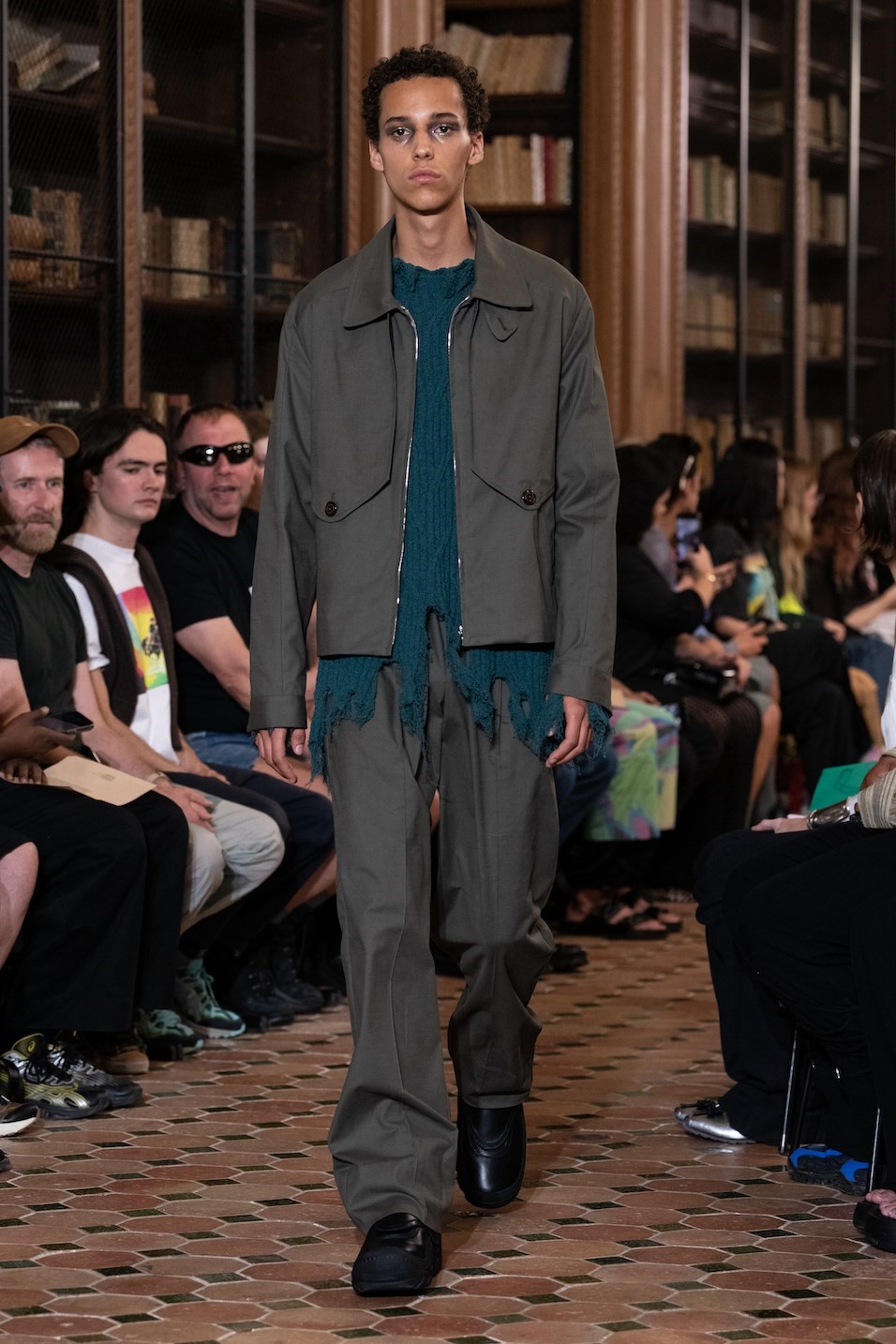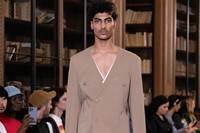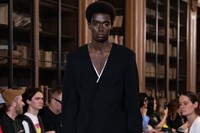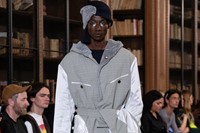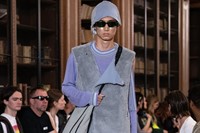Held last weekend in a stately library on the top floor of Lycée Henri-IV – a posh secondary school in Paris – Kiko Kostadinov’s Spring/Summer 2023 menswear show drew on the “intergenerational pain” of the Ottoman rule of the designer’s native Bulgaria. Deriving inspiration from Janissary military uniforms and the rural landscapes of Bulgarian painter Zlatyu Boyadzhiev, Kostadinov’s men stepped through the archaic hall in a series of iridescent suits and fluffy ensembles – some with deconstructed, silky and stripy pyjama-like panelling – with glitter seeping from their eyes like tears. As usual, the tailoring was immaculate, and the messaging behind the collection sturdy yet surprising.
“The masculine wardrobe is deeply entrenched in the tenets of war, power and industry,” read the press notes – and one could argue that Kostadinov’s clothes draw from exactly the same sartorial arenas; the uniforms of war, the suits of the powerful, and the workwear necessary for industry. Ever since his Central Saint Martins MA graduate collection in 2016 – which featured morphsuits worn underneath minimalist workwear – and the now-legendary, reconstructive series of Stüssy collaborations he created as a student, Kostadinov has garnered cult status around the globe as a meticulous, one-of-a-kind menswear designer.
In 2017, the London-based designer was appointed creative director of Mackintosh’s 0001 label, debuted his first standalone collection, and teamed up with Asics on some understated trainers; this would lead to a rolling collaboration with the Japanese sportswear giant on a series of playful, acrid-coloured trainers that are so popular as to have become practically ubiquitous. In 2018, the brand debuted a separate, idiosyncratic womenswear line helmed by Australian twin sisters Laura and Deanna Fanning, created boundary-pushing footwear collaborations with Camper, and Kostadinov launched AFFXWRKS – a more affordable, conceptual workwear label – with Taro Ray, Stephen Mann and Michael Kopelman. Despite having a prolific output and such a multilayered career, the man himself is famously self-effacing – Kostadinov prefers for the clothes to speak for themselves.
Here, to coincide with the release of his new collection, five longtime wearers of the brand – stylists, designers, writers, artists and friends – speak on Kostadinov’s challenging, thoughtful and timeless approach to clothing design.
Eric N Mack, Artist
“Kiko is a friend. We met in London, through a mutual friend and artist, SoiL Thornton. I was struck by his point of view, which was unique and rigorous. We connected over contemporary art as well as currents in fashion.
“I own a lot of Kiko – he thinks through the garments; material choices, sensory juxtapositions. His conceptual take on workwear is unmatched. It’s also just as dynamic in the realm of streetwear and in his work with Asics. His daring use of colour makes it all the more exciting each season. What’s it gonna look like? And more importantly, what’s it gonna feel like?
“I love the freedom and transformation that Kiko’s garments allow. There’s always multiple ways to wear a jacket, snaps, tearaways etc. I’m interested in the stories he’s telling through multiple aesthetic histories. His use of the old-fashioned format is freeing to me – I see the purpose and use of the collection convention to communicate and complicate.“
“I love the bravery, the unpredictability of each collection. It’s like every aspect of wearable garments are being challenged in some way” - Dozie Kanu
Dozie Kanu, Artist and Designer
“I somehow stumbled across an image from Kiko’s CSM graduate runway show; the model in the image was wearing this golden knit sweater with these hanging tassels, and had a blue work shirt wrapped around the neck like a scarf. And the black mask … man, that image was my iPhone background for some months.
“I have too many Kiko pieces to count. But the one I wear the most is this navy hoodie with red embroidered graphics on the collarbone area. If you see me at the airport, I’m probably wearing it because the pockets are perfect for passports and boarding passes.
“I just love Kiko’s approach [to fashion]. I love the bravery, the unpredictability of each collection. It’s like every aspect of wearable garments are being challenged in some way, whether it be through colour combinations, or cuts, or the textures. And he upholds the storytelling elements of putting together a collection, which I can really connect with as an artist.
“Kiko is on some global, universal type shit to me, and that’s what sets him apart as a designer. He manages to escape time periods and trends and cultures. It can sit anywhere and nowhere simultaneously. There’s also a degree of difficulty that I really admire. Other designers can’t copy it or they will look really stupid trying.“
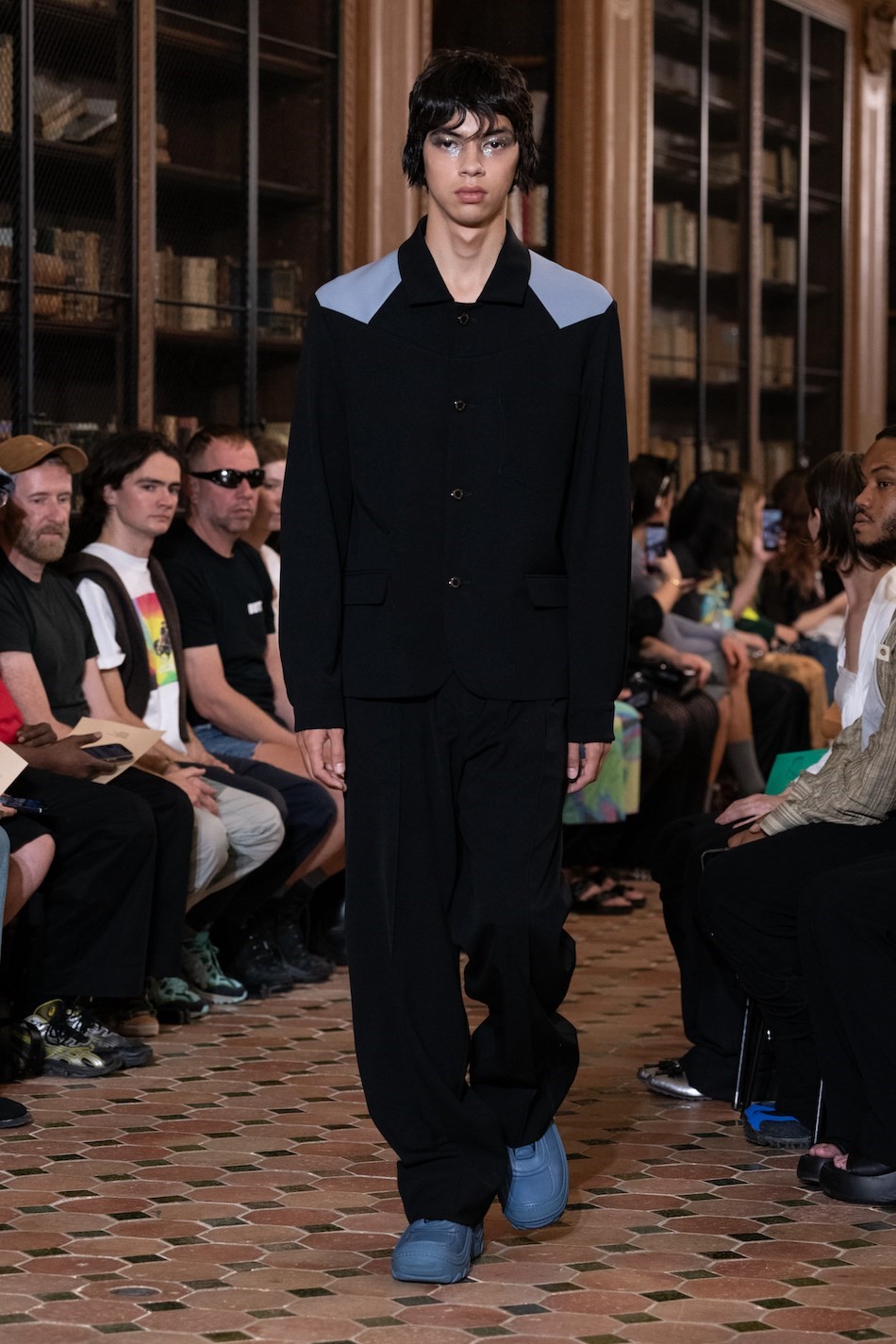
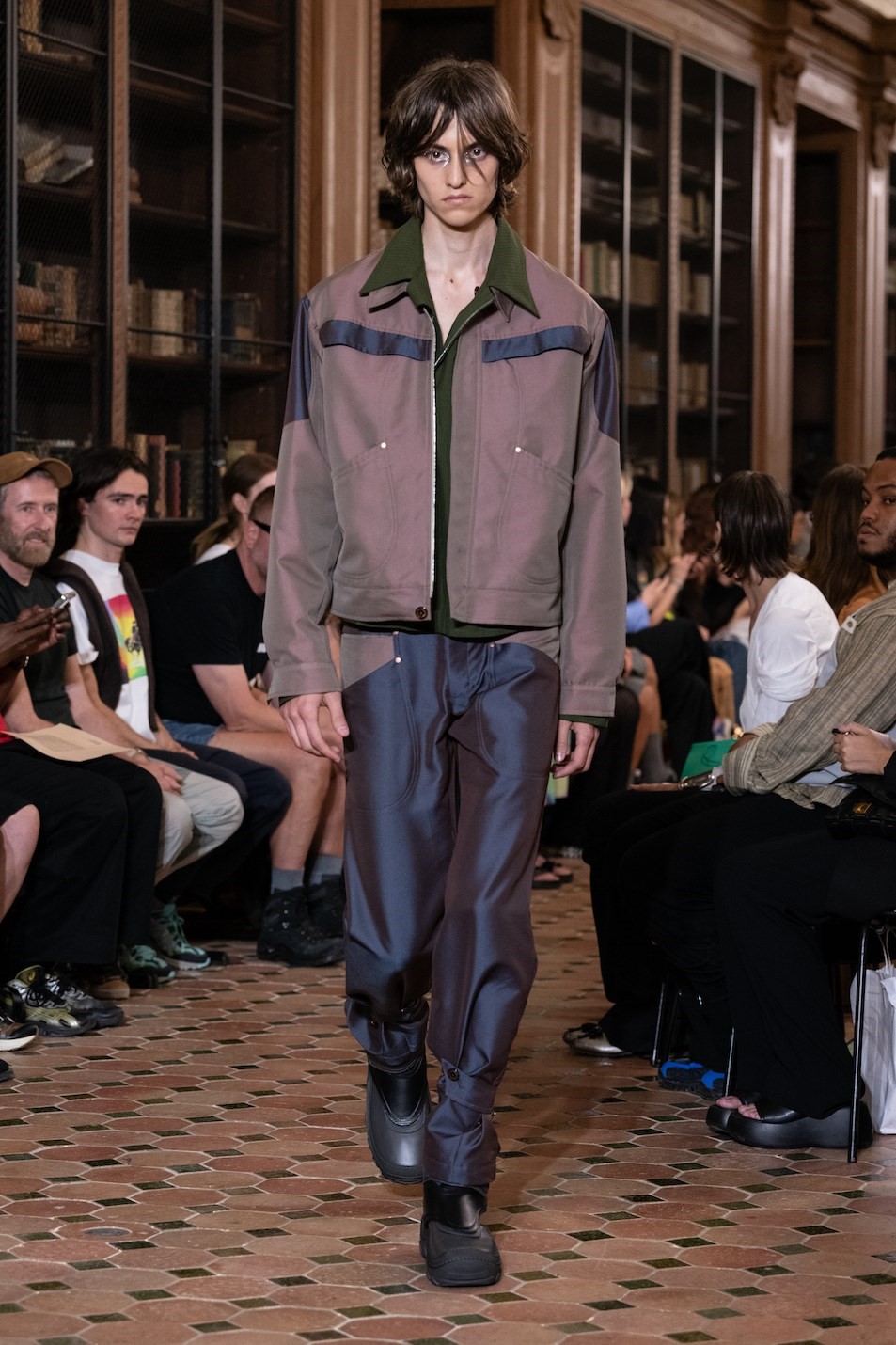
Daniel Pacitti, Design Consultant and Stylist
“I first became aware of Kiko’s work through his collaboration with Stüssy, where he reworked old pieces. They’re still the only Kiko pieces I own, along with the majority of his Asics footwear, and some apparel too. I wouldn’t say I wear any of it anymore though, it’s all away in storage. I mostly wear Asics Lahars now, but I think Kiko did a great job designing his Asics and I loved the colours and silhouettes he used and modified. I’m definitely going to dig them out and rock them in years to come.
“My favourite thing about Kiko’s menswear is his use of colour and pattern. I really appreciate his attention to detail with hardware and referencing. I also like the way his trousers sit on shoes, as this is something I’m quite picky about myself too, so it’s nice to see someone else with the same attention to detail. Nowadays, I prefer him as a footwear designer to a clothing designer.
“The whole London [fashion] scene seems a bit dead, but in terms of people from the city who wear his clothes, Kiko is definitely a well-known name. You can’t go into London and not see someone wearing the Asics he’s done, so in terms of footwear, he’s definitely smashed that.“
“There’s a huge level of ‘fuck you, we do what we want’ in the way they create and execute their vision” – Rei Delos-Reyes
Rei Delos-Reyes, Designer and Creative Strategist
“I first came across Kiko’s work seven years ago while studying at university. At the time he was working on collaborations with Stüssy, and it was the first time I’d seen a young designer crossing over with a renowned brand to create artisanal one-offs. The deconstructed garments had raw energy and a rebellious spirit, which was very moving for me as a student.
“I’ve collected a few pieces over the years, mainly tailoring-inspired outerwear and trousers. What I like most about the garments is the level of comfort they provide, combined with good detailing and functionality. Every item I own comes with very convenient features, which to me is a very important factor in deciding what to wear.
“My favourite part of Kiko’s menswear is the themes and stories they tell. There’s an element of fantasy and travel embedded within each collection, both in a physical and metaphorical sense. This way of storytelling breathes life into the collections in a way that transcends garments. The feeling is very similar to watching a good movie; you can get lost in it and be left wanting to be a part of that world.
“Regardless of any scenes, the brand has always set itself apart from others due to its philosophy. There’s a huge level of ‘fuck you, we do what we want’ in the way they create and execute their vision. I feel as if there aren’t as many designers nowadays bold enough to continuously take risks in the way Kiko does – through back-to-back seasons of entirely new silhouettes, references, material, colour, sounds, and stories. The benefits of the risks pay off evidently in how quickly the pieces sell out and the way it’s coveted by his cult following.
“The brand’s headstrong approach to both image-making and business feels like a breath of fresh air in an age where menswear has become somewhat of a one-dimensional field driven by consumerism. Kiko’s success proves that you can still play the game, achieve numbers and maintain a high level of creative integrity without confirming to the status quo.“
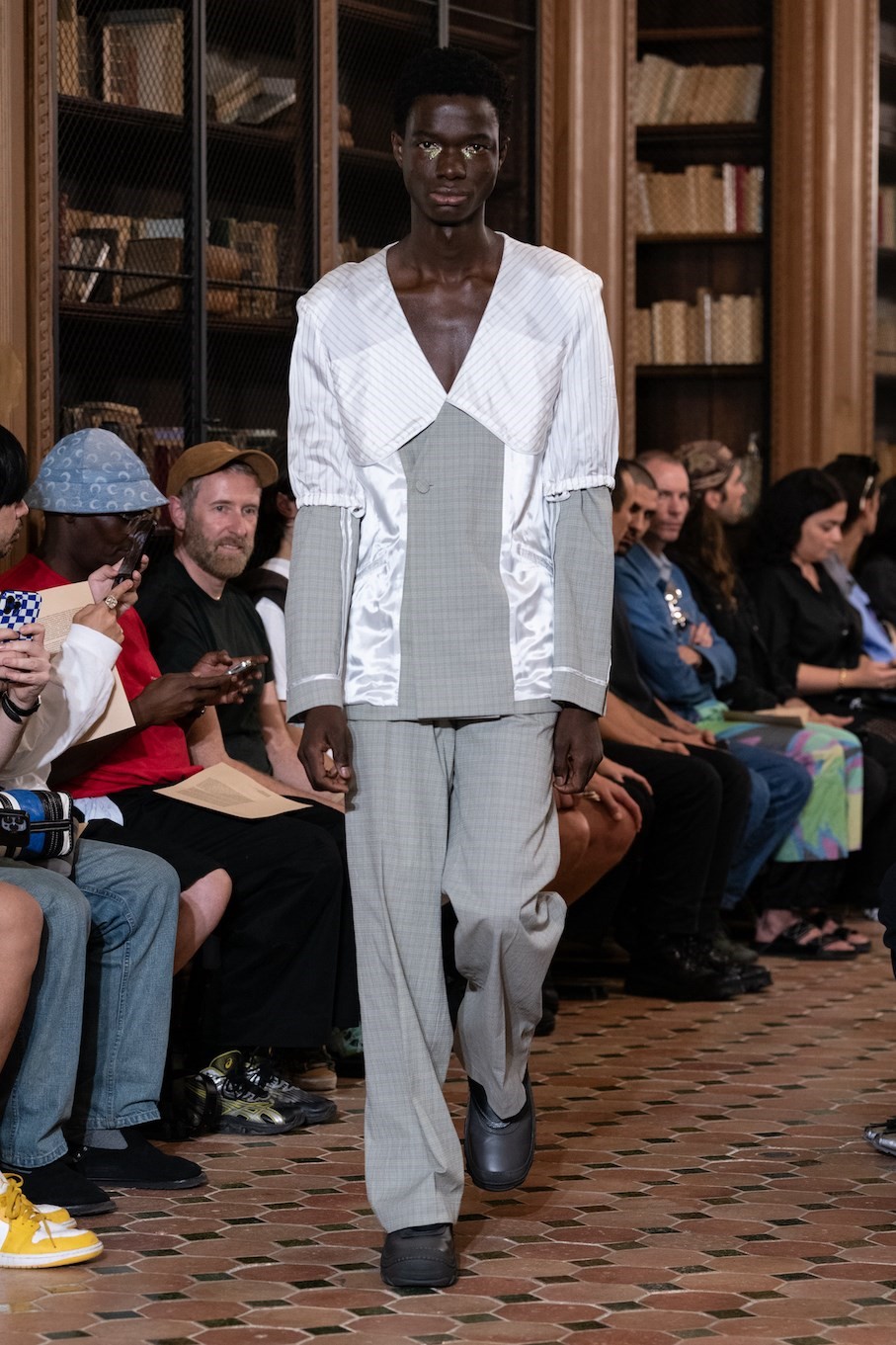
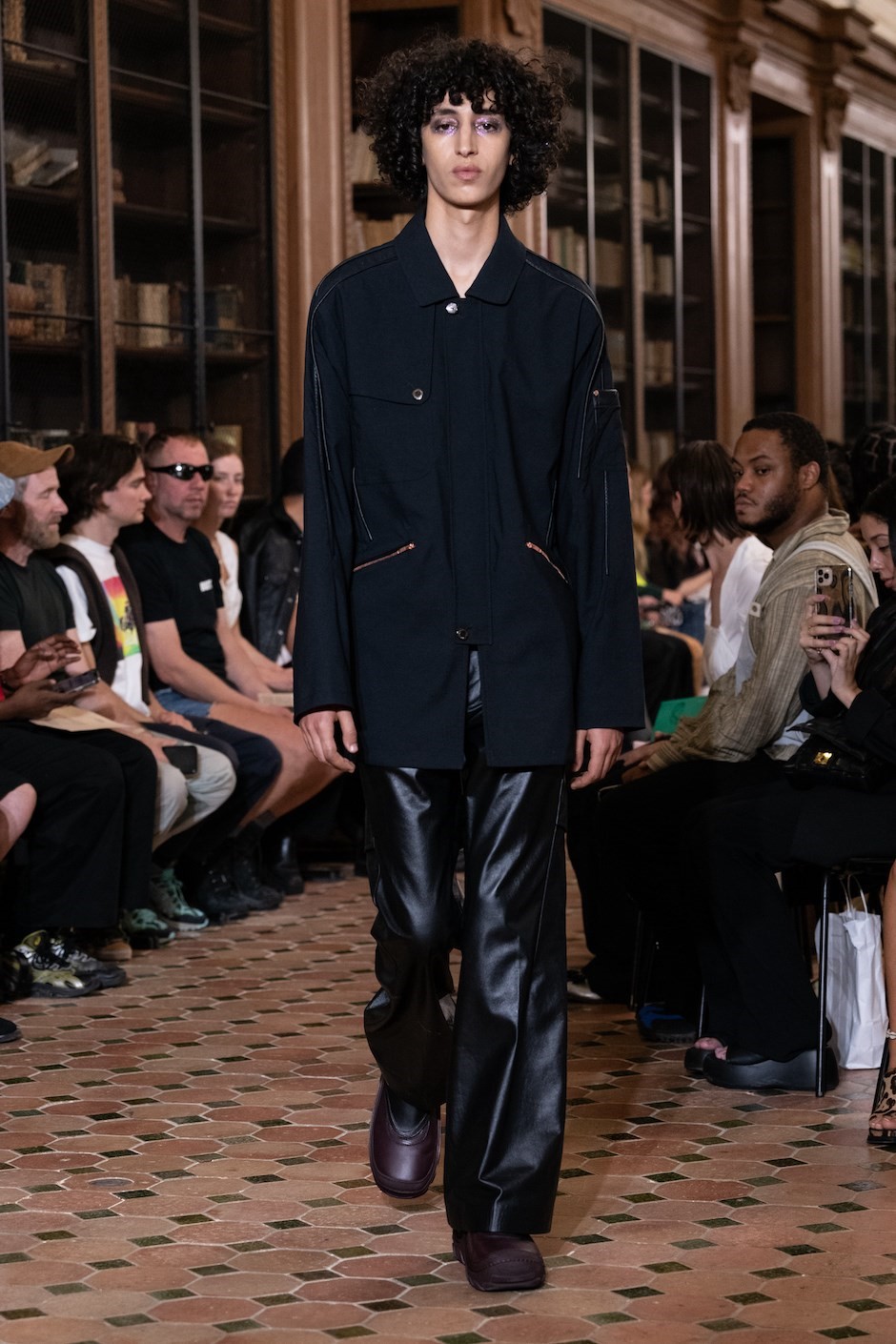
Jeppe Ugelvig, Curator and Writer
“Kiko was introduced to me by colleagues in the industry, who praised his genre-defying approach to contemporary menswear, and he quickly became my favourite young menswear designer working today. I was and still am fascinated by how he has mobilised so many different sections of the fashion scene and by the maturity of his output. There’s nothing silly about Kiko’s practice.
“I usually never buy new clothes, so it took me a while to get into his. A while back, I got to wear borrowed Kiko for an entire week – jackets, pants, shirts, full ensembles – and it opened up a new material dimension of his work to me. Kiko’s clothes are rare because they challenge you: the fits, cuts, and fabrics raise your awareness of clothes themselves, and this makes wearing them an intellectual experience.
“In an age where independent designers are forced to choose between the logic of hype or obscurity, Kiko finds a golden middle ground. This is unique and unusual, and worth celebrating, I think. While many designers opt for overly semantic ‘gag’ fashion for the Instagram grid, Kiko transcends the semiotic and embraces subtlety and abstraction without ever losing cool factor. In short, Kiko is an intellectual designer, and a rare one at that.
“He has, in record time, ascended London’s young, prize-sponsored graduate scene and established the foundation for a business – spanning menswear, womenswear, accessories, and even perfume – that could last a lifetime. This seems indeed to be the plan. Despite his hyper-contemporary aesthetic, Kiko’s biggest distinction is his evident longevity: in the style of giants before him (like Yohji Yamamoto), his practice seems like a multi-faceted and ever-morphing conversation with himself – one that will last decades.“
